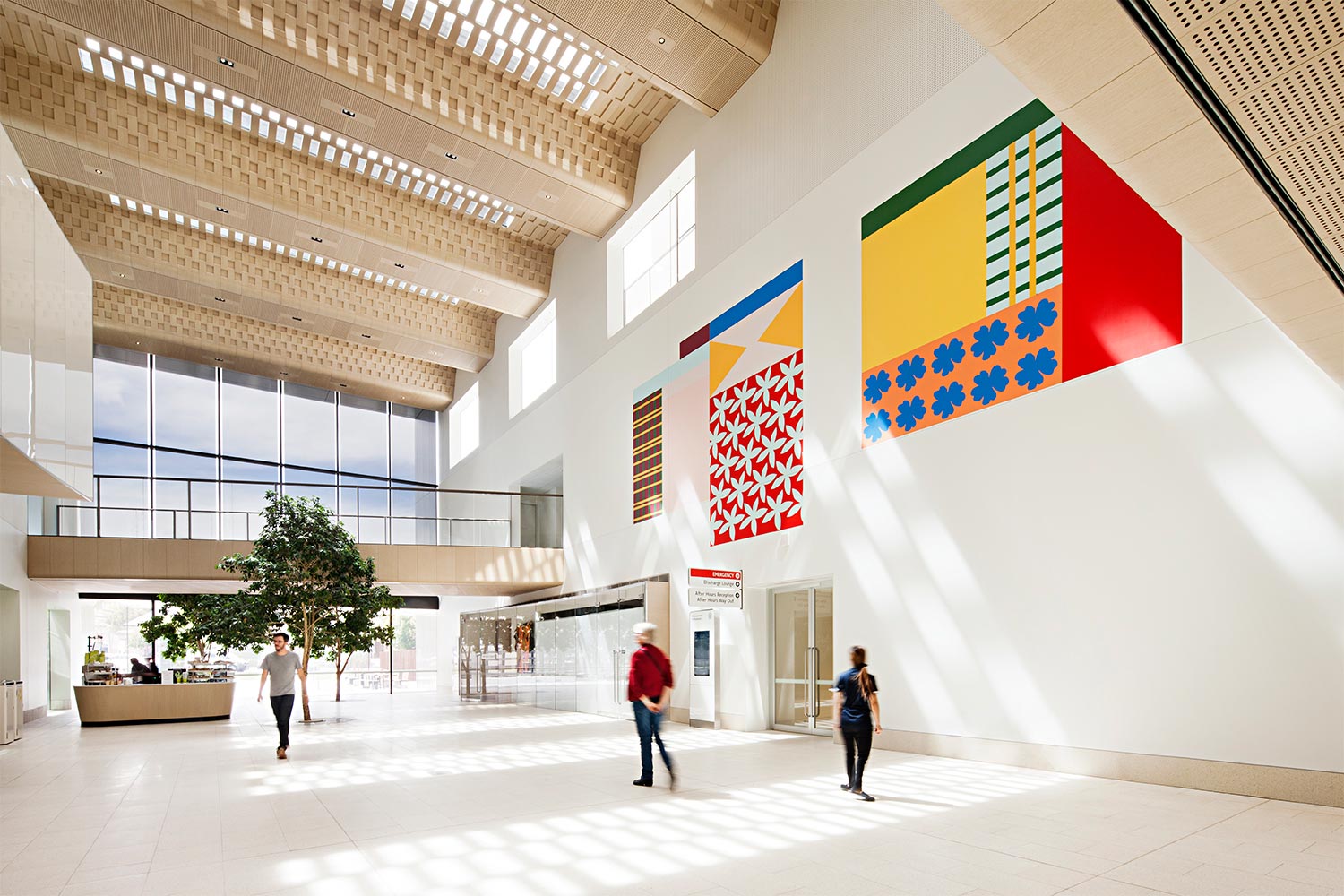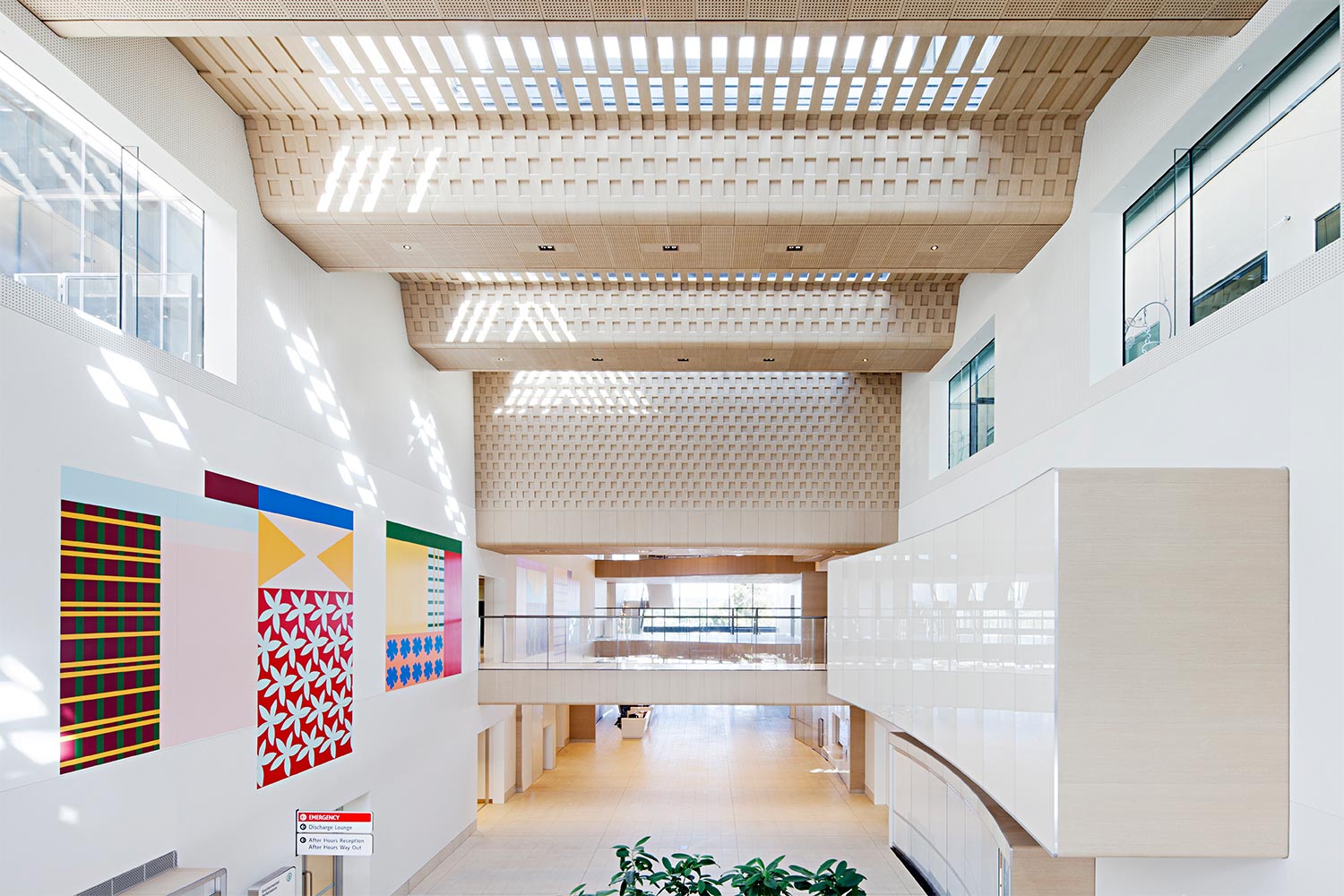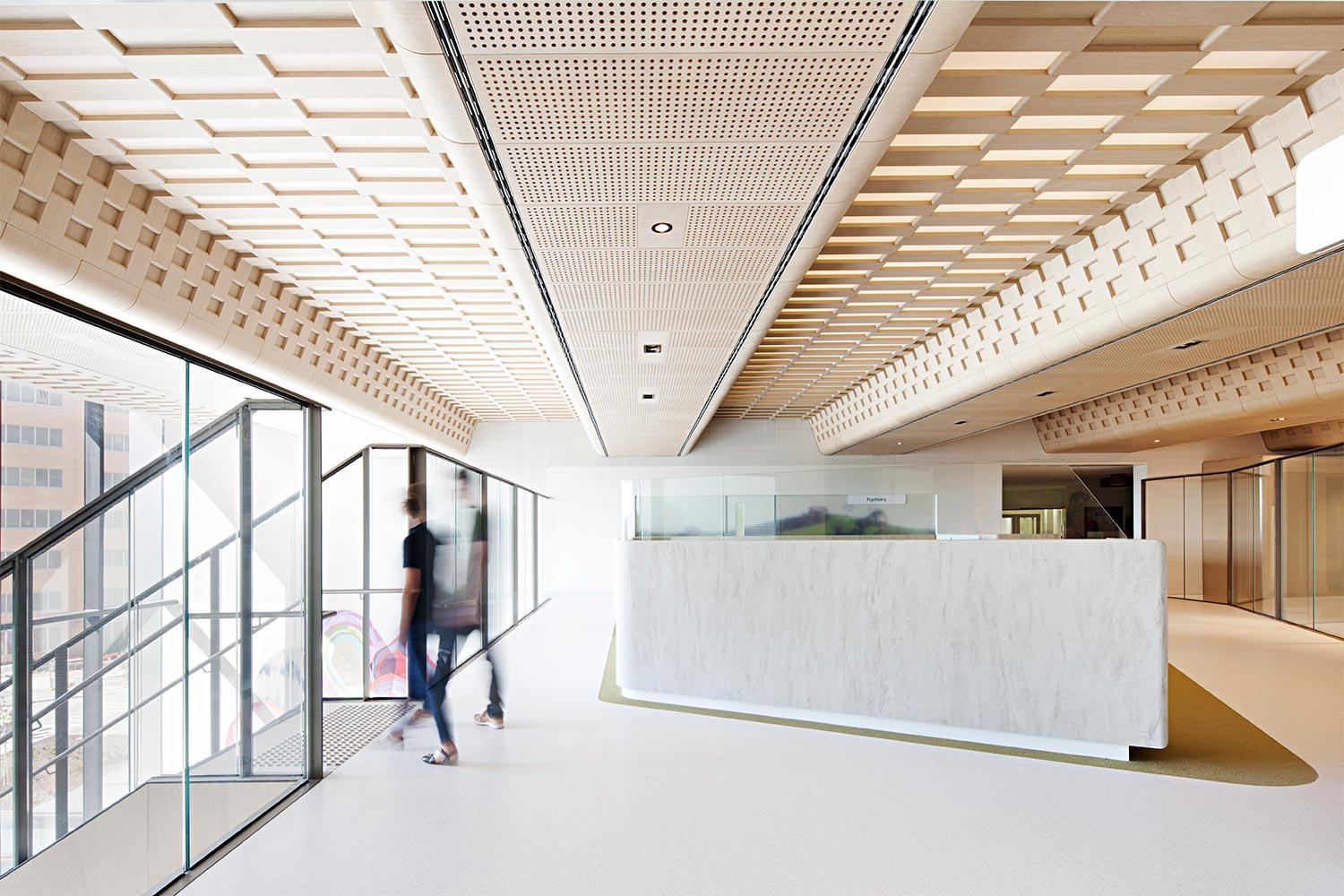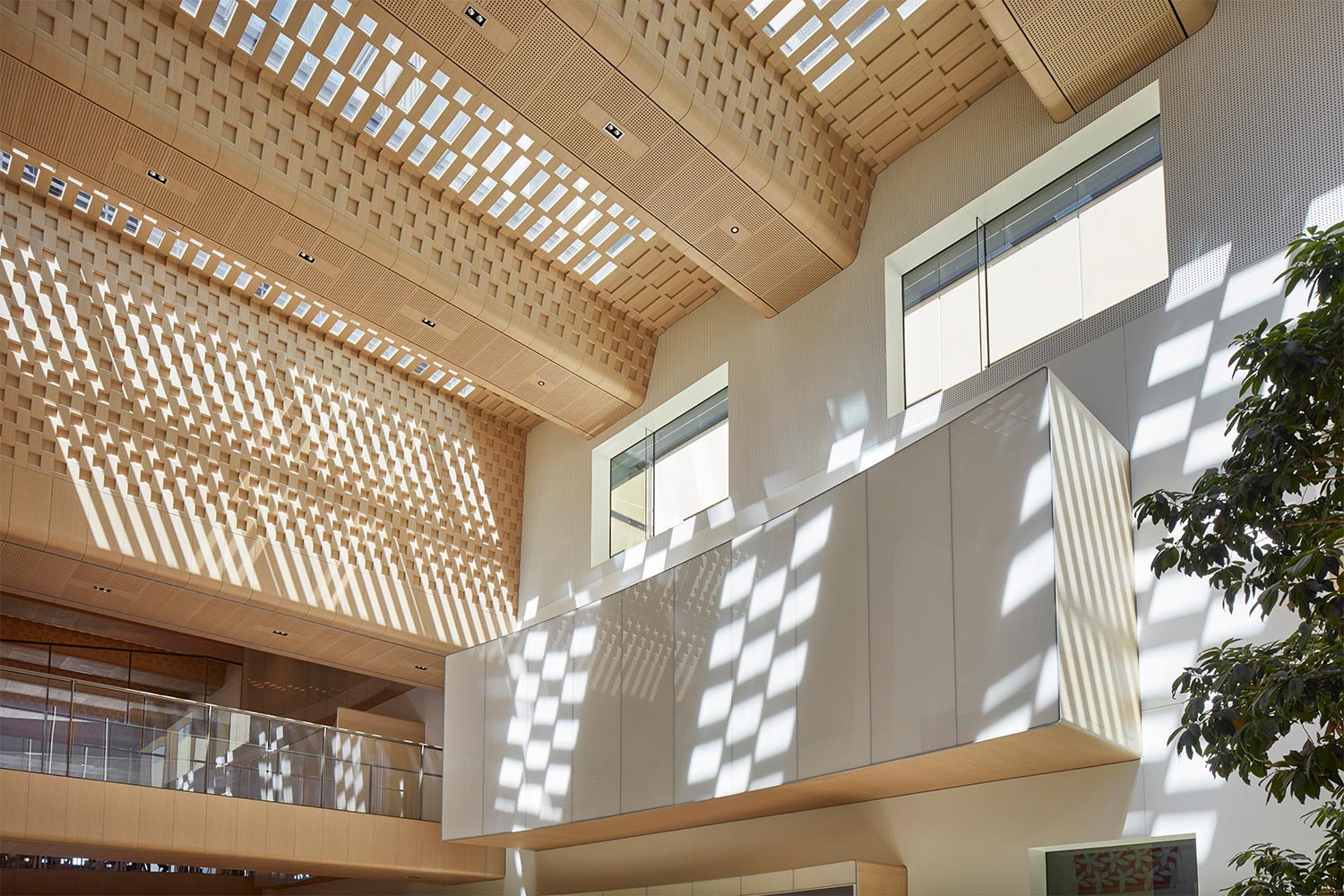Bendigo Hospital
Silver Thomas Hanley with Bates Smart
Bendigo is a large regional city in Victoria, Australia. The new AUD$630 million Bendigo Hospital is the largest hospital development in the area. The design brief centred upon building a world-class healthcare facility, but also creating a welcoming, holistic and positive environment that considers the regional location and future-proofs quality healthcare. The design began with the belief that modern hospitals should be places that promote wellness within the community, rather than just places that treat illness. The design therefore incorporates a holistic framework that considers the needs of patients, staff and the community, and offers a tranquil and caring environment through the integration of architecture, landscaping, health planning and evidence-based design.
The hospital creates an important community asset for the future healthcare needs of the growing regional population, so it was important to establish a friendly and human scale to the hospital. By taking inspiration from the scale and proportion of Bendigo’s heritage buildings and streetscapes, the design introduces a street-scale rhythm of vertical framing elements. Highly reflective facade windows glisten and mirror the surrounding natural landscape, making the building a more inviting facility.
Celebrating the importance of nature and its impact on wellbeing was also a key design strategy. Hospital rooms and circulation spaces have a direct connection with nature, whether it be in the form of landscaped views, external garden spaces, internal courtyards or landscaped roofs and planted screens.
In the main public space, a bespoke woven timber ceiling runs between the hospital’s two entrances. The pattern filters daylight providing an ever-changing dappled light effect. The use of timber and the quality of light generated provides a sense of warmth and helps to increase the wellbeing of patients, visitors and staff. The public spaces also incorporate a number of artworks that give the space a vibrant energy – such as large-scale works by Noel Skrzypczak and Esther Stewart.
The interior offers a journey through the local landscape, connecting the region with the internal clinical environment. Graphics and colour are used extensively, expressing the topography, landscape and colour palette of local nearby regions. Colours from each area are used in conjunction with a ‘hero’ image – an aerial photograph of a local landscape, abstracted to form textures, colours and patterns that are used within clinical departments.
Photography: Shannon McGrath and Peter Clarke




